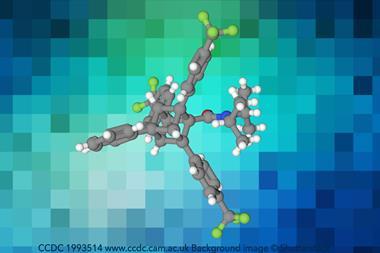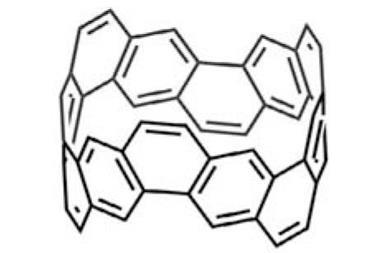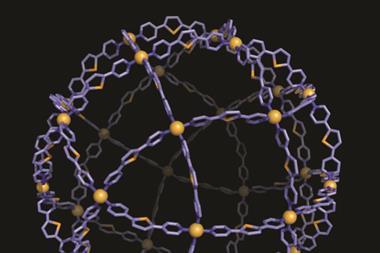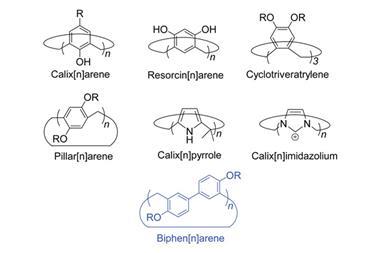Introducing pillar[4]pyridinium – the first of a new family of macrocycles
Scientists in Poland have made the most compact multiply charged macrocycle to date. Pillar[4]pyridinium is a cyclic tetramer consisting of four pyridyl units with methylene bridges between their nitrogens and para carbons. The quadruply charged molecule has a very symmetrical and incredibly strained structure. It represents a new class of cationic macrocycles, the pillar[n]pyridiniums.
Volodymyr Sashuk and his colleagues at the Polish Academy of Sciences made the unusual structure by performing a condensation reaction of 4-(bromomethyl)pyridine hydrobromide under basic conditions and in the presence of ammonium hexafluorophosphate. The reaction product came as a big surprise, initially they had only expected to make either a cyclic pentamer or hexamer.
Previous studies on analogous reactions only gave linear products. Adding ammonium hexafluorophosphate, which acted as a template, turned out to be crucial. Single crystal x-ray analysis showed a good fit between hexafluorophosphate ions and the macrocycle’s square cavity, with electrostatic interactions holding the two moieties together.
Pillar[4]pyridinium’s square and electron-deficient cavity recognises fluoride in water. The researchers suggest that larger pillar[n]pyridiniums might be useful receptors for electron-rich molecules so could catalyse reactions that occur via negatively-charged transition states.
References
S Kosiorek et al, Chem. Commun., 2017, 53, 13320 (DOI: 10.1039/c7cc08562a)
![Pillar[4]pyridinium](https://d2cbg94ubxgsnp.cloudfront.net/Pictures/480x320fitpad[0]/6/3/8/134638_c7cc08562a-ga_Credit_Royal-Society-of-Chemistry.jpg)
![Pillar[4]pyridinium](https://d2cbg94ubxgsnp.cloudfront.net/Pictures/480x320fitpad[0]/6/4/0/134640_P4P_Credit_Grzegorz-Sobczak--Oksana-Danylyuk-and-Volodymyr-Sashuk.jpg)












No comments yet